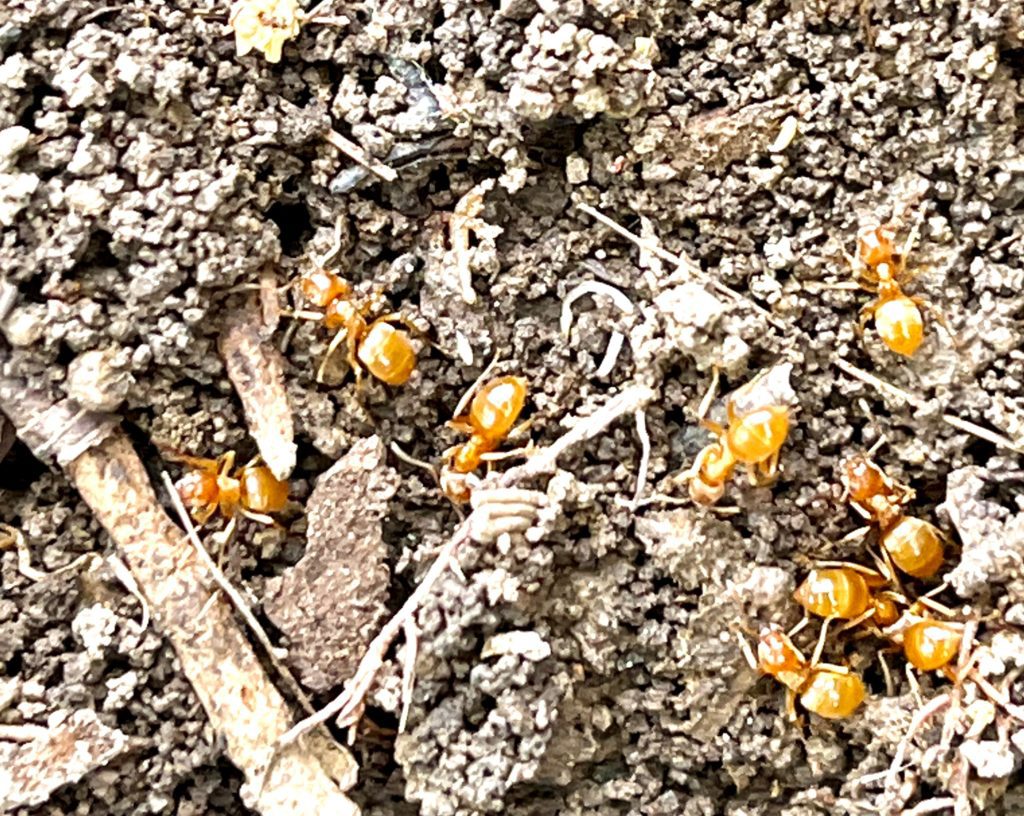by Patrick McShea
This year marked the fifth consecutive year that CMNH has sponsored the City Nature Challenge (CNC). One benefit of participation in the annual global event is a better understanding of the animals, plants, and fungi in our own neighborhoods. The submission of photo observations via the iNaturalist app, or Seek, a related app for younger audiences, can spark curiosity among students and teachers that lasts far longer than the prescribed four-day observation period.
As a participant in last year’s CNC, I learned about citronella ants when iNaturalist quickly generated a tentative identification for a trio of tiny yellow creatures photographed beneath a plate-sized rock in a backyard flowerbed. A subsequent information search on the Penn State Extension website provided some fascinating information about the largely subterranean species. Citronella ants get their common name from the lemon verbena or citronella odor they emit when threatened. For food, the harmless ants rely upon honeydew secreted by root-feeding aphids. The ants’ tending of the soft-bodied aphids resembles the management of cows by dairy farmers.

This information served me well earlier this year when I was asked to speak with a dozen five- and six-year-olds in the museum’s Hall of Botany. As we sat in front of the Pennsylvania Forest diorama, I challenged the group to imagine something we couldn’t see – the tangle of tree roots beneath the display’s massive American beech. When the children’s root descriptions indicated basic understanding of the living network, I told them about root-feeding aphids and citronella ants.
During this year’s City Nature Challenge, I again documented the ants in the backyard flower bed. In appreciation for providing me with a new way to interpret a long-established museum exhibit, I replaced their sheltering rock with great care.
Related Content
Using iNaturalist in the City Nature Challenge and Beyond
The City Nature Challenge Family Experience
Expanding the Scope of Environmental Education
Carnegie Museum of Natural History Blog Citation Information
Blog author: McShea, PatrickPublication date: May 3, 2022
